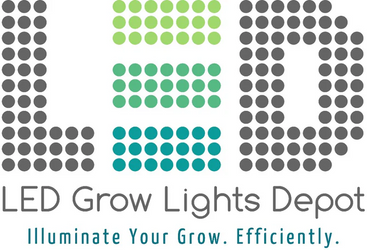Free Shipping in the USA on nearly all items!
Limited phone hours during the Holidays! Call us: 888-611-9305
Free Shipping in the USA on nearly ALL items! Limited phone hours during the Holidays!
We score 4.8 out of 5 based on 5742 reviews. Browse Reviews.


As the industry continues to grow and gain mainstream acceptance, it is crucial to consider the environmental impacts of this burgeoning space. While the plant has been celebrated for its potential medical and recreational benefits, it is also essential to examine the sustainability of its cultivation and production.
Water usage is one significant factor that can impact the environment during cultivation. The plants are known to be thirsty, and in regions where water is already scarce, their cultivation can put a strain on local water sources. In California, for instance, a state with a long history of cultivation, the plant has been blamed for exacerbating the state's ongoing drought crisis. Drought can have severe consequences for local ecosystems and communities, including reduced crop yields, wildfires, and habitat destruction.
In addition to water usage, the industry also has a carbon footprint due to the energy required for indoor cultivation. Many farmers rely on artificial lighting and climate control systems to grow their crops, which can be energy-intensive. This energy usage can result in greenhouse gas emissions, contributing to climate change. As the industry continues to expand, the energy demands of indoor cultivation are likely to increase as well.
Pesticides and herbicides used in cultivation can also have negative impacts on the environment. These chemicals can end up in the soil and water supply, potentially affecting local ecosystems and wildlife. Pesticides can also have negative health impacts on humans, especially when consumed through food or water. It is essential to use these chemicals responsibly and in moderation to minimize their environmental and health impacts.
Despite these potential environmental impacts, it is worth noting that the industry is still in its infancy and has the potential to become more sustainable. For example, some farmers are experimenting with organic and sustainable growing practices, including using natural pest control methods and conserving water through techniques like drip irrigation. These practices can help reduce the plant's water and chemical usage, making it more environmentally friendly.
The use of renewable energy sources for indoor cultivation is also becoming more common, helping to reduce the plant's carbon footprint. Solar, wind, and other renewable energy sources can be used to power the lighting, heating, and cooling systems used in indoor cultivation. These renewable energy sources produce fewer greenhouse gas emissions than fossil fuels, making them a more sustainable option for large-scale cultivation.
Another way to make the industry more sustainable is through the legalization and regulation at the federal level. Currently, the plant is illegal under federal law, which makes it difficult for farmers to access financing and other resources. Legalization and regulation could allow for more research and development into sustainable growing practices, as well as better oversight of the industry to ensure that it is operating in an environmentally responsible manner. Legalization and regulation could also lead to the implementation of industry-wide sustainability standards and guidelines, further promoting environmental responsibility within the industry.
In conclusion, while the plant has the potential to have a significant environmental impact, it is still in its early stages and has the opportunity to become more sustainable. Through the use of sustainable growing practices, the adoption of renewable energy sources, and the legalization and regulation at the federal level, the industry has the potential to minimize its environmental impact and play a positive role in protecting the planet. It is essential for this space to prioritize sustainability as it continues to grow and gain mainstream acceptance.
{"one"=>"Select 2 or 3 items to compare", "other"=>"{{ count }} of 3 items selected"}

Leave a comment